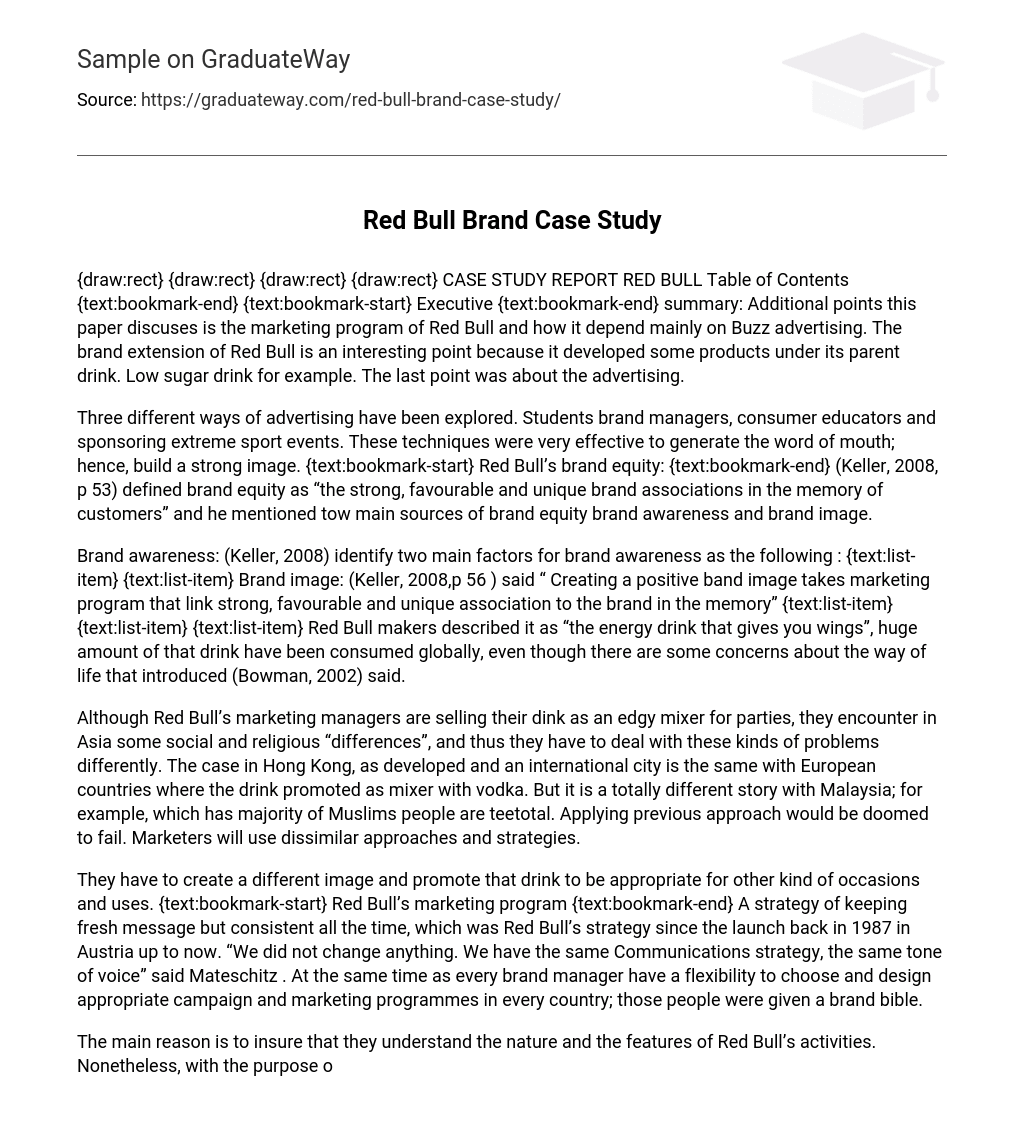The introduction of brand extensions by Red Bull is fascinating, as it has generated multiple products within its primary drink category, including a low-sugar alternative. Moreover, an essential aspect pertains to the employed advertising strategies.
In this passage, the author explores three different advertising methods – employing student brand managers, consumer educators, and sponsoring extreme sport events. These strategies have been remarkably effective in generating word-of-mouth excitement and establishing a powerful brand identity. According to Red Bull’s definition, brand equity refers to the favorable and unique associations that customers form with a brand. This idea stems from two main sources: brand awareness and brand image.
Red Bull’s marketing managers are promoting their product as a fashionable party mixer. Nevertheless, they encounter cultural and religious obstacles in Asia that necessitate unique handling of these concerns. In Hong Kong and European nations, the beverage is marketed as a mixer with vodka, aligning it with local customs. However, in Malaysia, where most people are Muslim and abstain from alcohol, implementing the same approach would not yield success. Consequently, marketers must develop distinct approaches and strategies to appeal to various demographic groups.
The task at hand is to generate a new portrayal and endorse the beverage for various occasions and purposes. Red Bull has adhered to a marketing plan emphasizing the perpetuation of a novel message while remaining consistent throughout the duration of their existence, starting with their inception in Austria in 1987 and continuing to this day. “We have not made any alterations. Our communications strategy remains the same, as does our tone of voice,” stated Mateschitz. Simultaneously, each brand manager has the flexibility to opt for and develop an appropriate campaign and marketing scheme for each individual country, with explicit guidance provided in the form of a brand bible.
Red Bull invests a significant amount of resources into generating new ideas to maintain the freshness of their brand message. One effective method they employ is brand extensions, where they introduce new products under their well-established brand names. This strategy is based on the expectation that consumers will appreciate and embrace these new offerings.
One advantage of brand extensions is the familiarity consumers have with the parent brand. In addition, they also tend to have a positive impression of the parent brand and associate positive attributes with it. Compared to launching entirely new products with new names, brand extensions can assist in various marketing activities. Specifically, they can increase the effectiveness of promotional efforts and provide access to a wider range of distribution channels.
According to Keller (2006), brand extensions can reduce consumers’ perceived risk and increase the perceived benefits of a product or service. Kumar and Linguri (2003) mention that Red Bull has successfully employed buzz marketing and has reaped the rewards from it. They argue that Red Bull has created a daring and somewhat risky image for its products. When Mateschitz introduced the energy drink in 1987, many bars in Austria initially refused to carry it. However, snowboarders and clubbers quickly recognized the energizing effects of the drink.
Red Bull became increasingly popular not only in the Austrian market but also in Europe. To create excitement among its potential customers and establish its image, Red Bull utilized a strategy called “consumer education.” It recruited student brand managers who were given free samples and tasked with hosting parties on university campuses. Through this approach, the students rapidly spread positive word-of-mouth about Red Bull. Another approach to implementing this marketing technique involved hiring local individuals to drive special cars adorned with Red Bull’s logo and a large can. These cars were equipped with a fridge filled with Red Bull cans.
Red Bull sponsors various extreme sports events designed for athletes only, such as the flying-machine flugtag, cliff-diving, kite-boarding, snowboarding, mountain biking, paragliding, street luge, ice cross downhill, skateboarding, and surfing. The drivers who are responsible for distributing free energy cans to those in need play a crucial role in this endeavor. Emmy Cortes, director of communications for Red Bull, explained that these events are intended to support a community of athletes and enhance the credibility of the sports they participate in (Kumar; Linguri, 2003).





